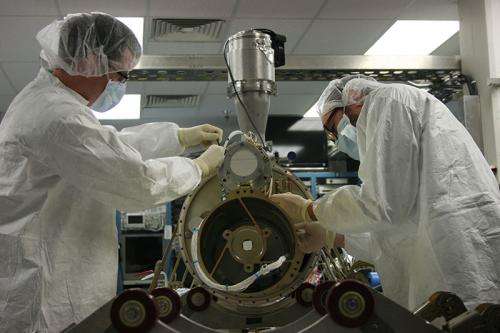Experiment examining a SLICE of the interstellar medium

(Phys.org)—When you look up at the stars at night, the space between stars looks empty. But, yes there is something there. It's called the interstellar medium. An experiment from the University of Colorado will fly on a NASA suborbital sounding rocket from the White Sands Missile Range in New Mexico on December 15 to study this space between the stars.
The Sub-orbital Local Interstellar Cloud Experiment (SLICE) will use an 8-inch diameter telescope and spectrograph covering the far-ultraviolet wavelength range from 102 – 107 nm.
Kevin France, the SLICE principal investigator from Colorado, said "We hope to observe four hot stars in the constellations of Orion and Taurus. We use these stars as background sources to study the composition, temperature, and ionization state of material in the interstellar medium."
"This particular ultraviolet spectral window can only be accessed from space. These spectra will enable us to measure several phases of the interstellar medium: from the cool molecular gas that will eventually form the next generation of stars, to the hot gas that is driven into the interstellar medium when massive stars die in supernova explosions," he said.
So, why the interest in this space in space? The immediate interstellar environment determines the structure of the heliosphere. The heliosphere controls the cosmic ray flux seen in the inner solar system which has a profound effect on the Earth, influencing cloud cover, lightning frequency, upper atmosphere chemistry and even mutation rates of surface, deep-earth and deep-sea organisms.
The interaction of stellar winds and the interstellar medium is a general phenomenon, and thus all stars and planetary systems will have the astrospheric interfaces. Understanding the structure of the local interstellar medium is important in evaluating the cosmic ray environment and the potential habitability of nearby exoplanets.
SLICE is scheduled for launch at 10 pm. MST, Dec. 15, on a Black Brant IX sounding rocket. The experiment will fly to a projected apogee of 198 miles during the nearly 16-minute flight.
Provided by NASA




















